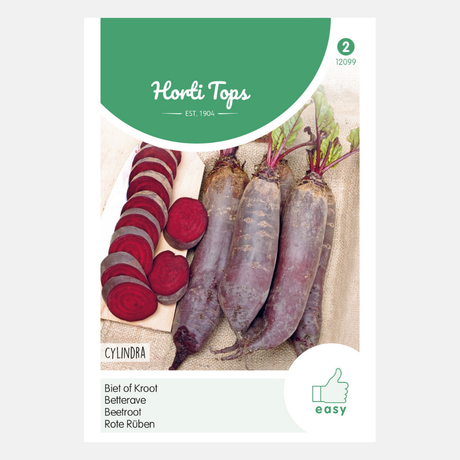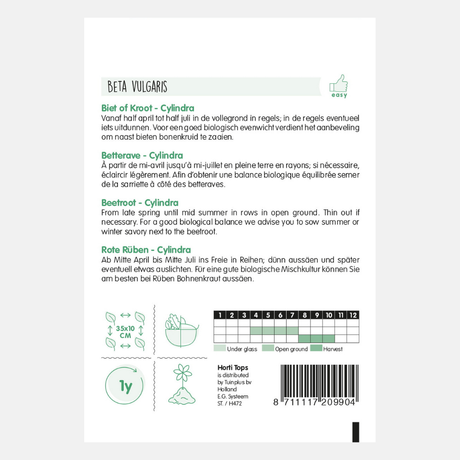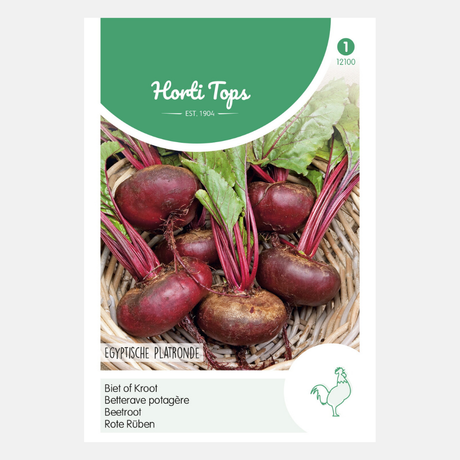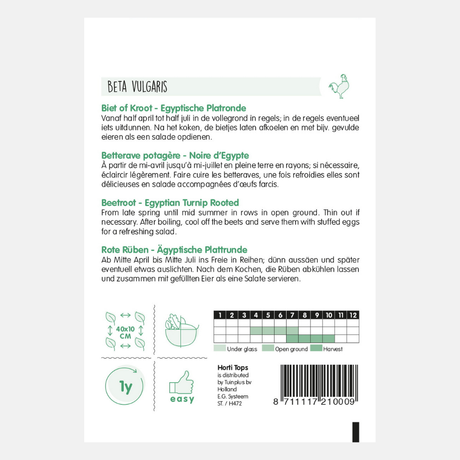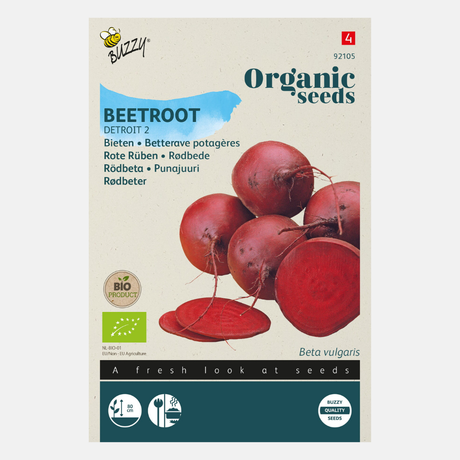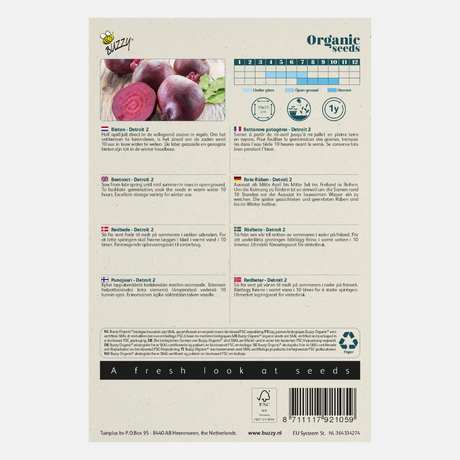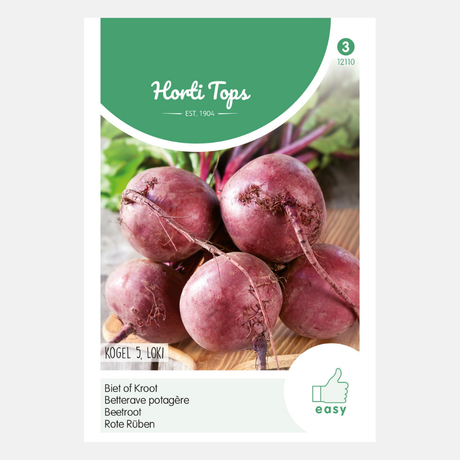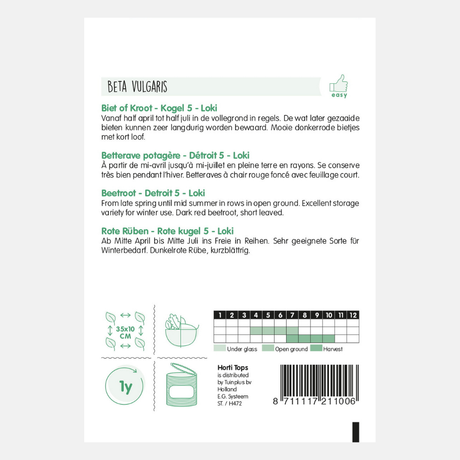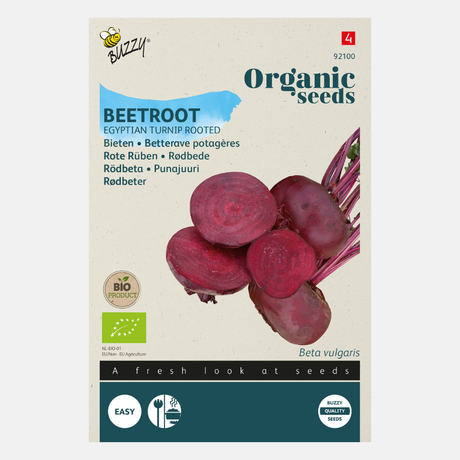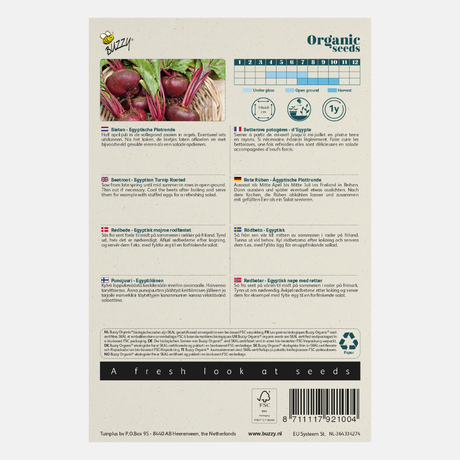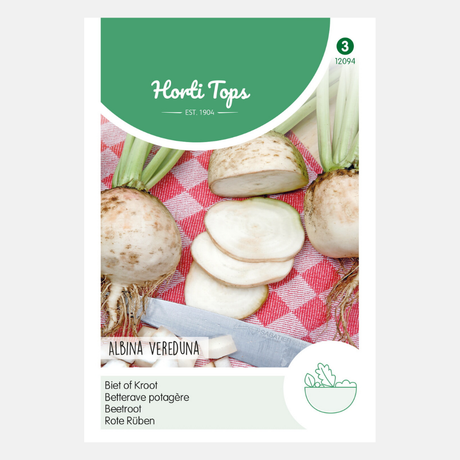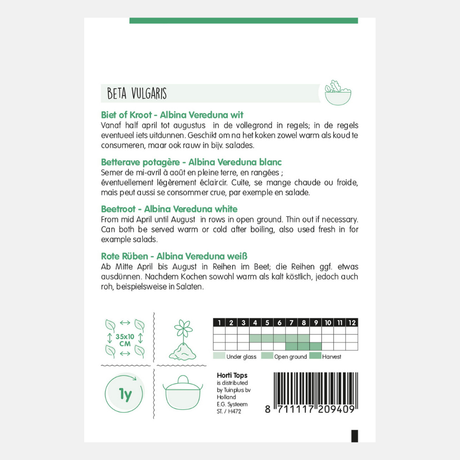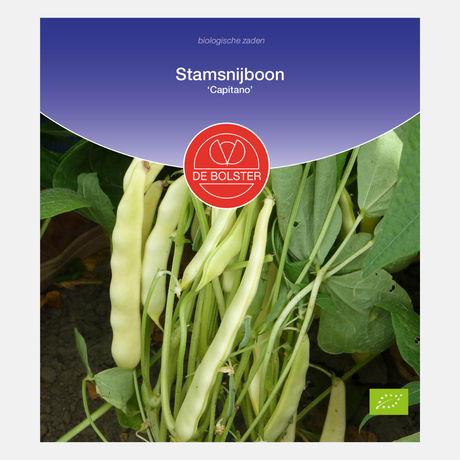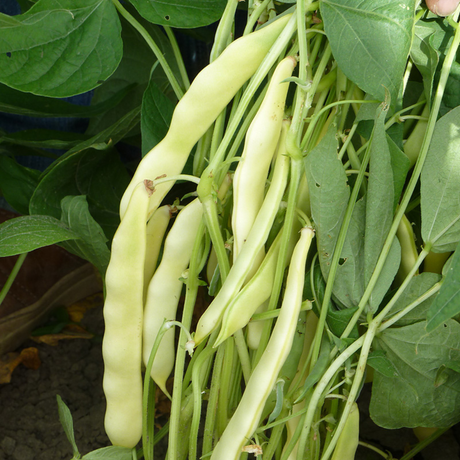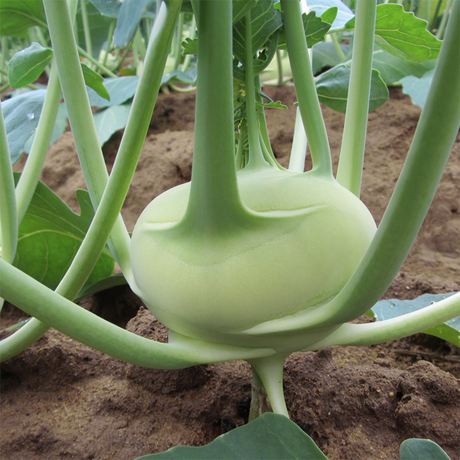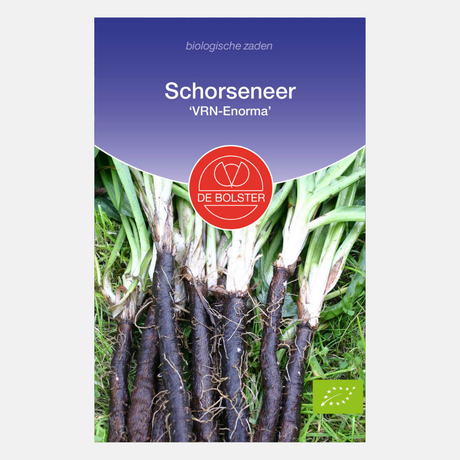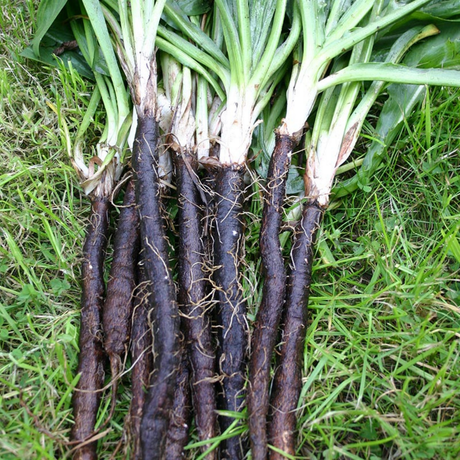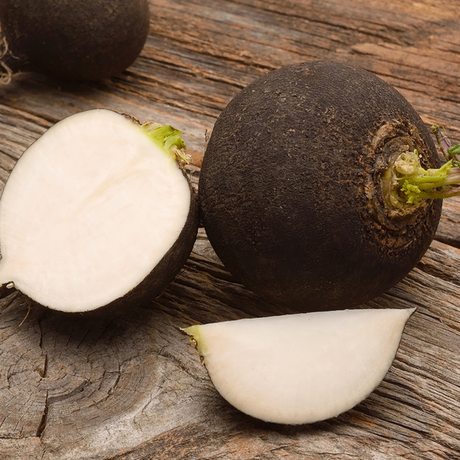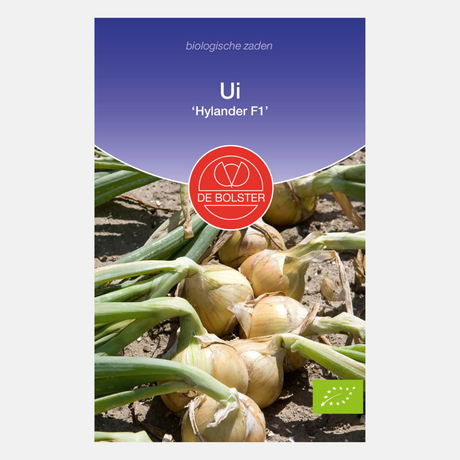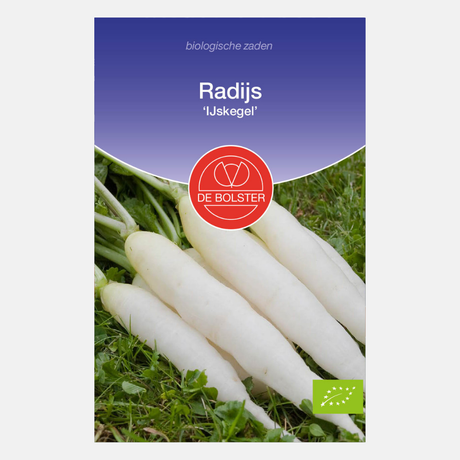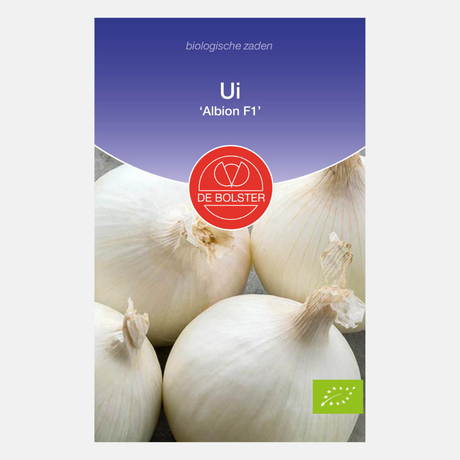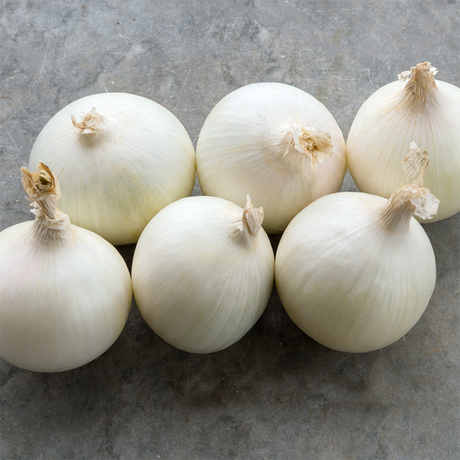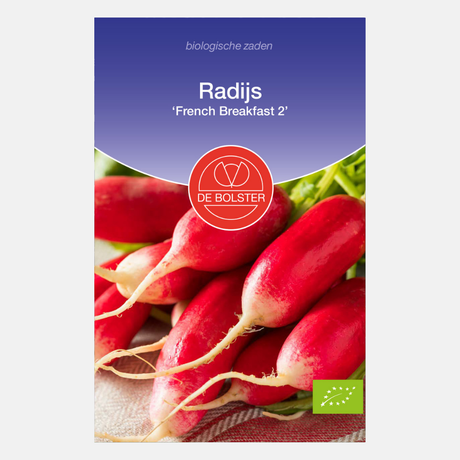- Regular price €1,45Unit priceUnavailable
- Regular price €1,85Unit priceUnavailable
- Regular price €2,95Unit priceUnavailable
Red Beet 'Egyptian Flat Round'
Regular price €1,45Unit priceUnavailable- Regular price €2,95Unit priceUnavailable
- Regular price €2,79Unit priceUnavailable
Red beetroot Ball 'Ball 2' BIO
Regular price €2,79Unit priceUnavailable- Regular price €2,99Unit priceUnavailable
- Regular price €2,25Unit priceUnavailable
- Regular price €2,25Unit priceUnavailable
- Regular price €2,25Unit priceUnavailable
Beets 'Egyptian flat round' BIO
Regular price €2,95Unit priceUnavailableRed beet 'Egyptian flat round' BIO
Regular price €2,79Unit priceUnavailable- Regular price €4,99Unit priceUnavailable
- Regular price €2,95Unit priceUnavailable
Beetroot 'Hula Hoop' - ideal for growing in pots
Regular price €2,35Unit priceUnavailable- Regular price €2,79Unit priceUnavailable
- Regular price €2,25Unit priceUnavailable
Sowing red beets in pictures
In this video Tom shows how he sows red.
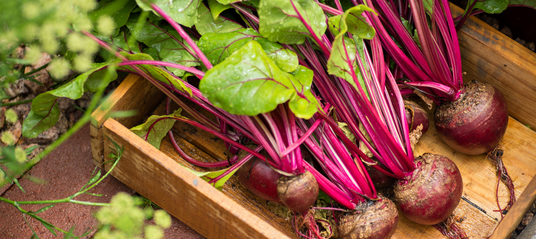
Growing Guide Growing Beetroot - from sowing to harvesting and then everything turns red
You may also like
View allBuy red beet seeds: Deep red flavour bombs from your garden
Beets are true all-rounders in the kitchen. They belong to the Beta vulgaris species, a versatile vegetable known for its rich flavor and nutritional value. Raw, cooked, fermented, or roasted – these tubers are nutritious, versatile, and surprisingly easy to grow yourself. With good vegetable seeds, you can have your own colorful harvest on the table within months. Freshly picked, home-grown beets also have a richer and sweeter flavor than supermarket varieties, making them extra special.
Introduction to sowing red beets
Beets, or as your grandmother probably called them: beetroot! They're a real gem for your vegetable garden. Beets are also known as Beta vulgaris and belong to the beetroot family. You probably know them for their beautiful deep red color and wonderfully sweet flavor—not to mention how healthy they are. Whether you prefer classic round beets, cheerful yellow beets, or delicious organic red beets, with beet seeds you can easily conjure up these tasty little tubers yourself. Some varieties, like yellow beets, have a sweeter flavor profile. Sowing? It's really not difficult: from the second half of April to the end of June, you can sow the seeds directly in the ground. Draw a straight sowing line and ensure your seeds are sown in moist soil for good germination. This promotes seed germination. Make sure you choose a spot with plenty of sunlight and keep the soil nice and moist – then they'll germinate like wildfire and grow like crazy. Beetroot seeds germinate at a soil temperature of 10 degrees Celsius or higher, so wait until the soil has warmed up sufficiently.
When sowing, you can place the seeds about 2 cm deep and space them about 5 cm apart. Once the seedlings emerge, you can thin them out to about 10 cm – just give each beet the space it deserves to grow into a nice, round tuber. It's important to thin out if the seedlings are too close together, as beets can't be transplanted after planting. The best time to sow? When the ground is no longer icy and the weather settles down a bit. Your beets love loose, nutrient-rich soil that retains moisture well, but isn't too soggy – just don't fuss, feel the soil a bit with your hands and you'll know it's ready. Beets grow well almost anywhere, as long as the soil isn't too wet. A layer of mulch (such as compost) helps keep the soil moist and suppresses weeds, which benefits the growth of your beets. In addition to compost, you can provide a potassium-rich fertilizer as soon as the tubers start growing for a healthy harvest.
Each packet usually contains a few grams of seeds, which is enough for a nice row of beets. Beetroot can also be grown as an autumn crop, allowing you to harvest and store them late into the season. By paying attention to the right growing conditions and caring for the young plants properly, you can grow healthy beets. For an early harvest, you can sow them in pots in February/March, but do so in a cool and light spot to keep the seedlings strong and healthy.
Beets aren't just delicious; they're also packed with vitamins, minerals, and antioxidants. They're perfect for your healthy vegetable garden and make great companions with vegetables like spinach and garlic. Just be sure not to plant them next to potatoes or beans—they don't get along well. With a little care, you can enjoy your own harvest from summer to autumn. Whether you throw them raw in salads, cook them in a stew, or roast them in the oven—beets are truly versatile and add a special touch to any meal. The red pigment (betanin) is also good for your blood vessels and promotes circulation. So, with beet seeds, you'll not only add color to your vegetable garden, but also health and variety to your plate. Enjoy gardening!
Why sow beetroot or beetroot seeds?
Beets are robust, grow in almost any soil, and have a long shelf life. After harvesting, the best way to store beets is to twist off the leaves and store them in a cool, dark place. This way, they maintain good quality and can be used well into winter. Beets are a sustainable way to eat fresh vegetables and also store well after harvest. You can sow them all at once or in phases for a staggered harvest.
Benefits of beetroot (beta vulgaris) in your garden:
- Easy to grow – even for novice gardeners
- Deliciously versatile – from beetroot carpaccio to soup
- Colorful on your plate – intense red tones, sometimes with surprising patterns
- Long harvest – sow from spring to summer
- Keeps well – store them in sand or pickled
Our organic beetroot seeds
At Plukkers, you'll find quality seeds to help you grow firm, flavorful tubers. Each bag contains approximately 50 grams of seeds, enough for multiple sowings per season.
Beetroot – Detroit
A classic with round, dark red tubers and a delicate, mild flavor. Ideal for salads and pickling.
Beetroot – Egyptian flat round
An old variety with flat tubers and fast-growing buds. Harvests early and tastes deliciously sweet.
Yellow beet 'Boldor' BIO
The yellow beetroot 'Boldor' is a firm beetroot with a surprising colour: the inside is bright yellow.
Red beet 'Chioggia' organic
The beetroot 'Chioggia' comes from the Italian town of Chioggia and the flesh contains beautiful red and white rings.
The right place for red or sometimes yellow beets
Want to get the most out of your beets? Then it all starts with finding a spot in your vegetable garden where they'll feel right at home. Beets are true sun worshippers, but don't worry if they occasionally enjoy a bit of shade—they're not difficult to care for. The soil they thrive in? Nice and moist, well-drained, and packed with nutrients. This allows those roots to stretch nicely, and you'll get that wonderfully sweet flavor we all love. And here's a handy tip: don't sow your beets too close together—5 to 6 centimeters between each seed gives them room to grow into firm, round tubers you can be proud of. Beets are an easy crop to grow and are rarely affected by pests and diseases.
Also, pay attention to the weather before sowing. Beets are not wimps and can easily tolerate a bit of fresh air, but they do best when the temperature is around 15 degrees Celsius. The perfect sowing period? From mid-April to the end of June works fantastically, but you know what's great? With a bit of luck, you can even reap a good harvest in the fall – as long as the ground isn't shivering with cold.
Beets are simply packed with goodness and truly deserve a place in your vegetable garden. They're chock-full of antioxidants, vitamins, and minerals like manganese, which boost your energy levels and ensure your body absorbs other nutrients effectively. Whether you toss them raw in your salad, sprinkle them on your plate as a colorful garnish, or simply serve them cooked – beets are incredibly versatile and always a feast for the eyes.
When harvesting, pay close attention to the size of your beets. Once they're the size of a golf ball or tennis ball, they're at their most delicious—anything bigger can make them a bit tough, which is undesirable. With a little attention to the right spot, enough space between your seeds, and the perfect harvest time, you'll be rewarded with a bountiful harvest bursting with flavor and health. Small or misshapen beets can result from sowing too close together, insufficient water, or soil that's too heavy. Here's how to make beets a real winner in your vegetable garden—enjoy them!
How to sow and care for beets in open ground
Sow beets from April to July, either in rows in the open ground or in deep containers.
Young beets are ideal for cooking after harvesting; they are at their best then and retain their mild flavor.
Tips:
- Sow 2cm deep with 10cm between plants
- Keep the soil evenly moist
- Thin out after emergence to allow room to grow
- Harvest when the tubers are about 6–8 cm, young ones can also be harvested
Edible leaves
Did you know you can also eat the young leaves and foliage of the beetroot? Delicious in mashed potatoes or as a stir-fry. This way, you use every part of the plant – all the way to the Plukkers.
Pick color and taste
With beetroot seeds, you can bring flavor, color, and satisfaction to your vegetable garden. Choose your favorite variety, sow carefully, and taste the difference between fresh and home-grown.




